Struggle to find the right antique lighting for your old house?
You’re not alone! If you’re like me, you want lighting that’s practical yet faithful to your house’s history. I’ve discussed the lengths you can go to restoring your home in a previous blog post.
I developed a passion for antique lighting when I moved into my house. You can’t beat an old gas light converted to electricity or an early electric fitting for quality and adding period character.
However, I went a bit crazy with this passion, as this huge Art Nouveau ‘gasolier’ in my former dining room shows (it was a bargain, promise!).
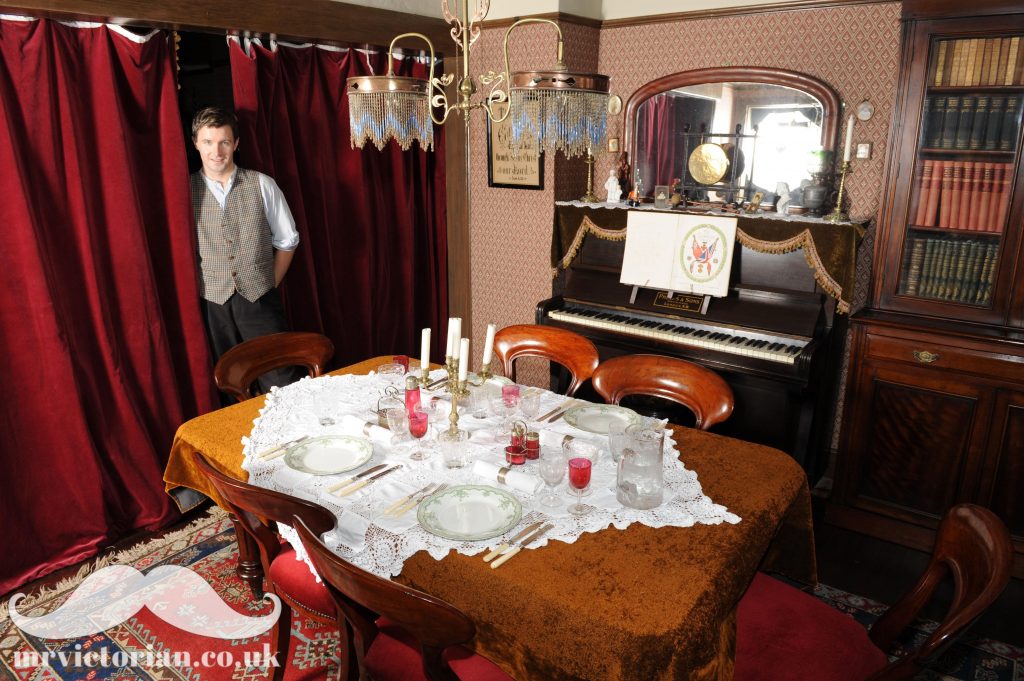
As a result, I made many mistakes during this early spending spree. I have now sold many of these fittings.
Getting the right type of antique lighting style for your home is dependent on its location, status and age as well as the period you’re trying to replicate.
So here’s what I’ve learnt.
Oil vs gas vs electric
Like the VHS vs Betamax video recorder battle of the early 1980s, gas and electric lighting competed to take over from oil light in the early 1900s home.
Gas lighting was ahead in urban working and middle-class homes thanks to the invention of coin-operated gas meters.
In contrast, the upper classes felt gas was ‘common’, so continued with oil and candle lighting until they installed electricity.
Gas lighting was also a rare feature in rural homes as gas works were based in towns and cities.
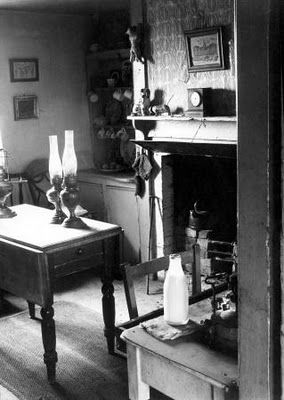
Although Edwardian builders often constructed middle-class houses with electricity, British householders only fully embraced electricity from the 1930s.
Less is more
The Victorians would’ve been dazzled by the light in our homes today as the average gas light or early light bulb was equivalent to a 10-watt bulb, which you can’t even buy now!
Victorians sat directly under a light source when they read or sewed, hence gas lights being positioned over a parlour fireplace or above a kitchen table as shown below.
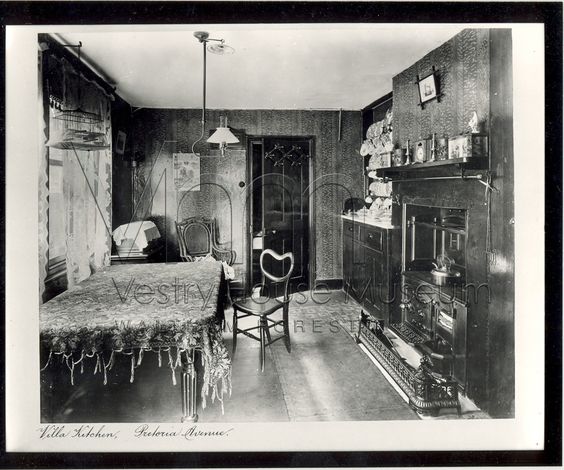
So don’t be tempted to fill each corner with period-style fittings like a pub!
Above all, people of yesteryear supplemented gas or early electric lighting with oil lamps – a nice extra touch in your drawing room or kitchen.
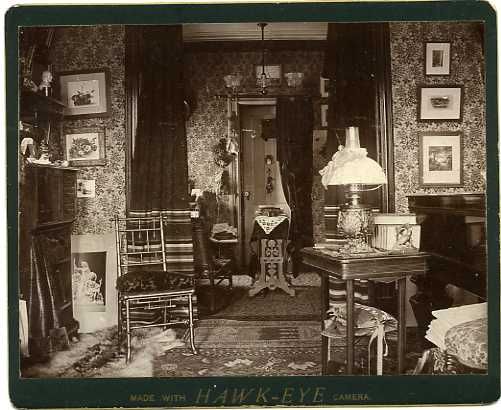
Antique lighting – status is everything
Some gas lights were elaborate and took on the fashions of the time to appeal to the middle-class market.
For instance, this 1913 Veritas Gas Light Catalogue shows the huge range of lights available in the early 20th century.
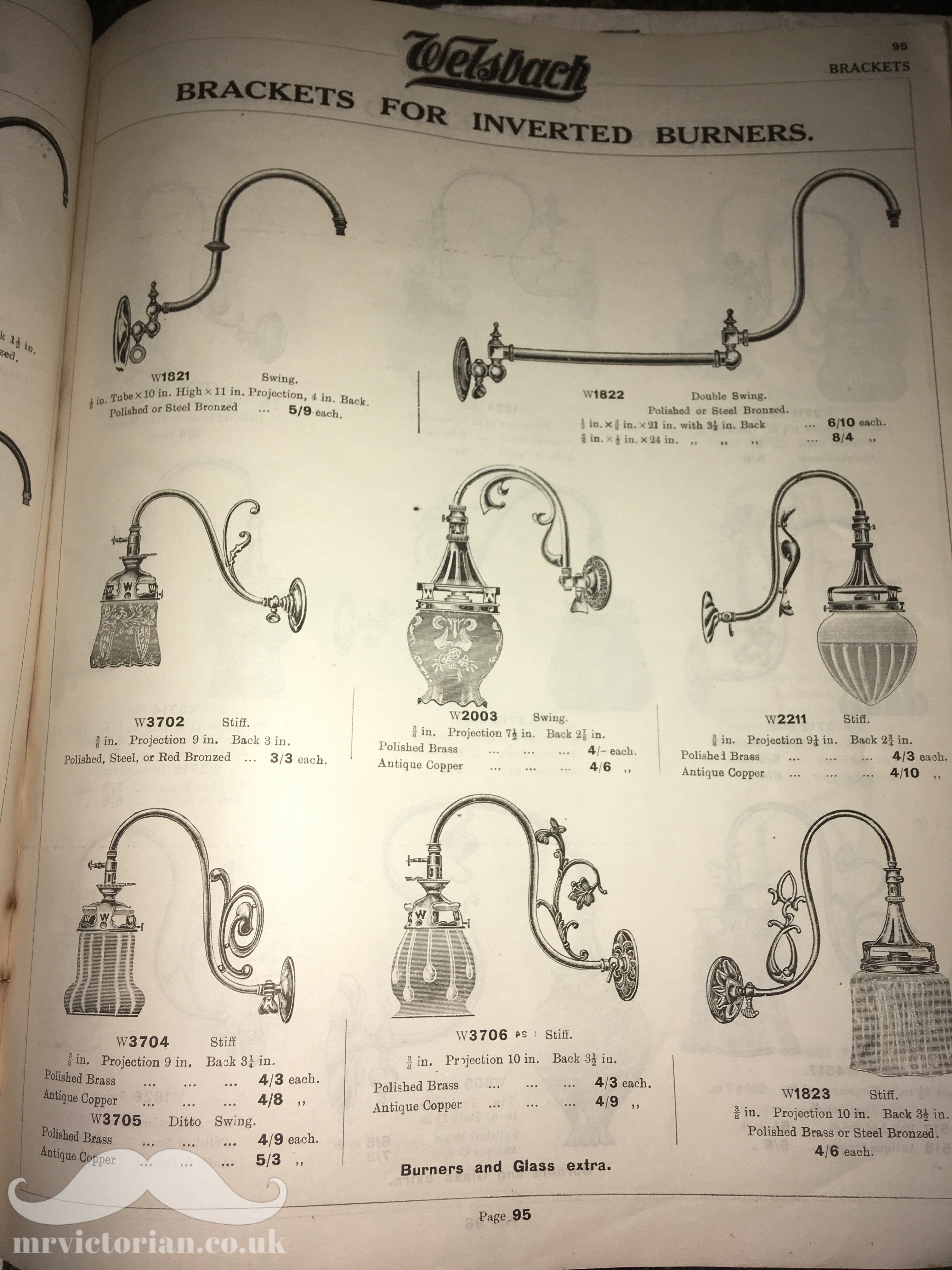
However, gas lighting in the working-class home was simple as this slum interior shows.
Upstairs, downstairs
Most urban housing had gas lighting by 1900 but householders used it sparingly due to cost.

People opted for candles or oil lamps to walk to bed, reducing the need for gas lighting upstairs. Above all, Victorians had suspicions about the health impact of gas so often avoided gas lighting in bedrooms.
However, I was lucky enough to find traces of old gas light pipes in my bedrooms. Each room had one fitting off-centre above the fireplace and I’ve placed antique gas lights in these original positions for show.
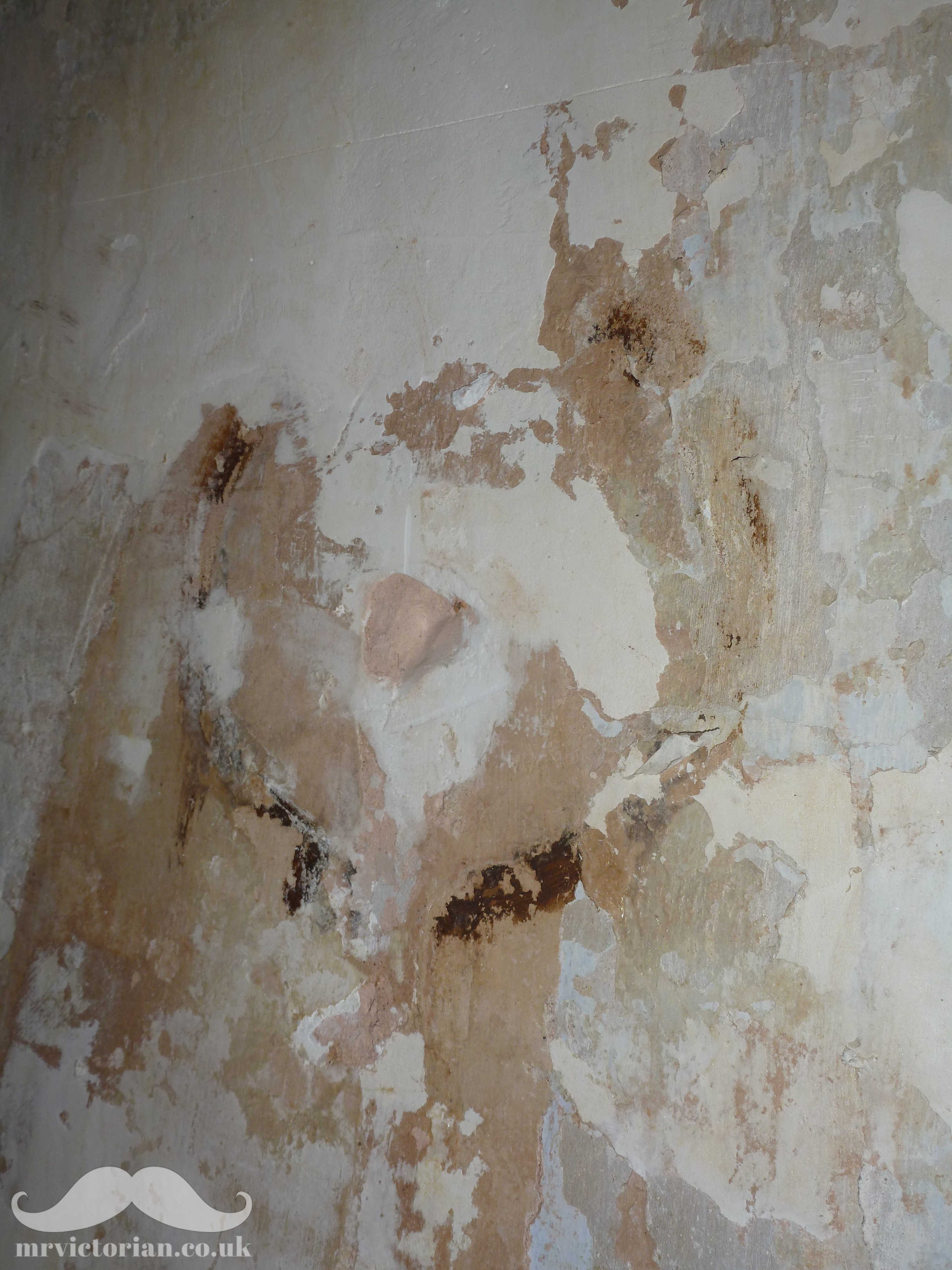
Furthermore, Victorian house builders often installed bedroom gas lights next to windows to replicate natural light, as this photo shows.
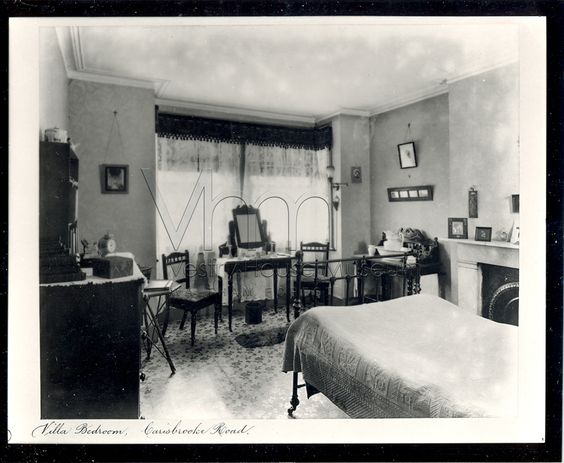
Up or down antique lighting
Downlit gas lights were only widely available after 1905 so true Victorian gas lights were upright (take note museum curators and set designers!).
Downlit swan-neck fittings like this one in my kitchen were particularly popular. Manufacturers made air vents from ceramic, brass or tin, and later produced chrome-plated versions from the 1920s.
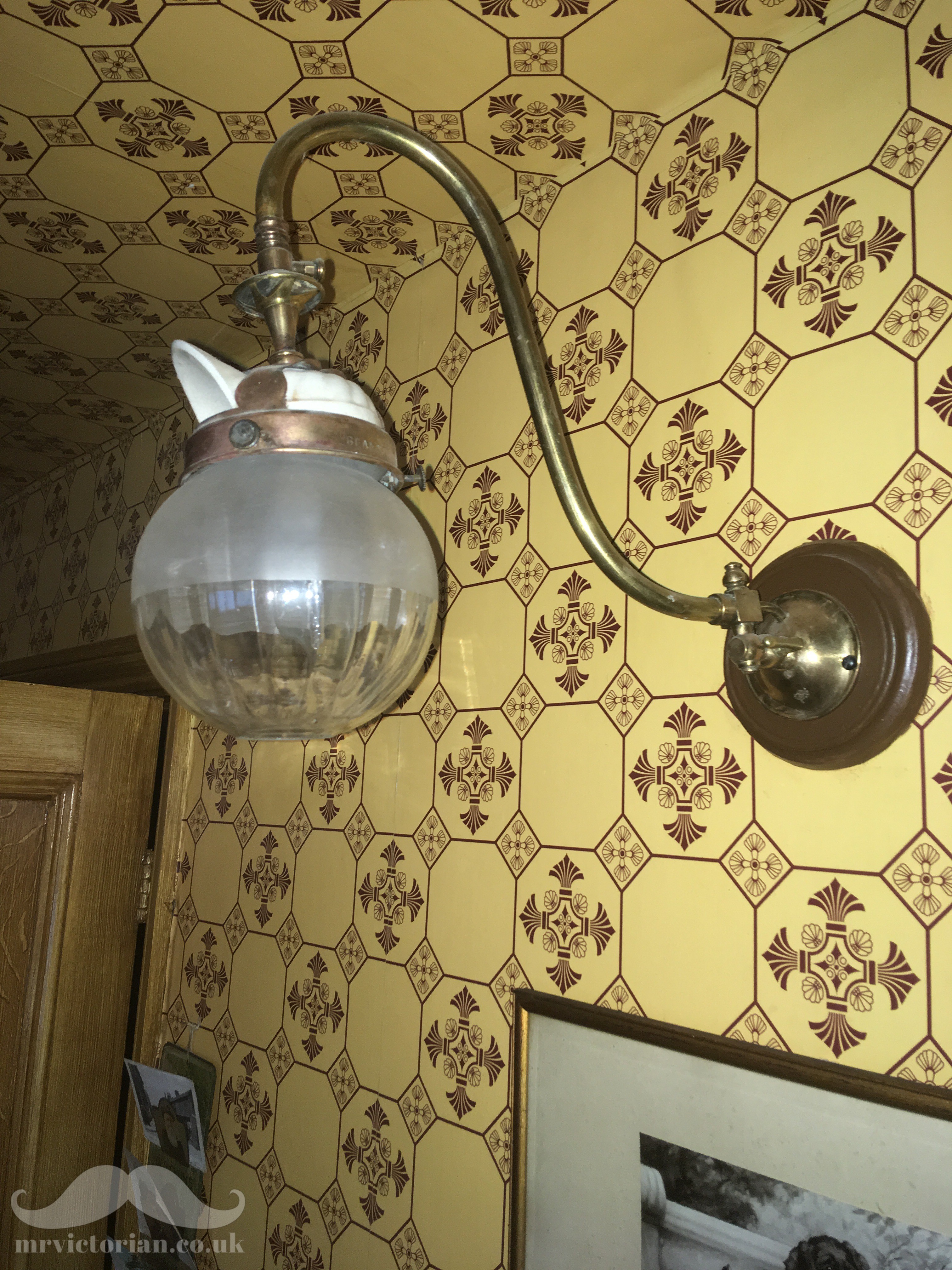
One of the earliest and most widely available upright gas burners was a ‘batwing’ as in my third bedroom. It let off a flat gas jet of blue light.
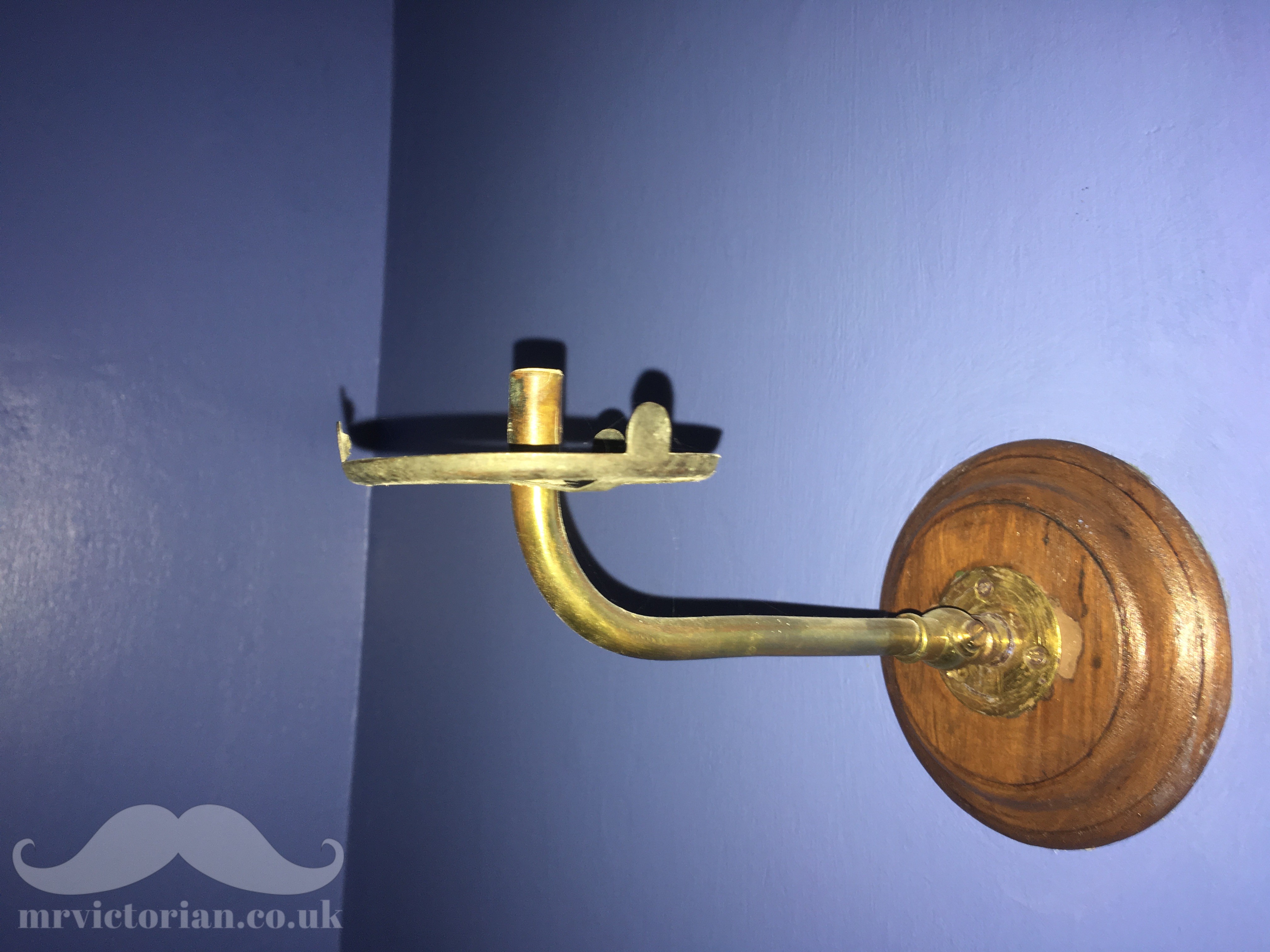
Upright incandescent burners from the 1890s gave out a brighter and cleaner light. For example, I have installed an electric converted version in my parlour.
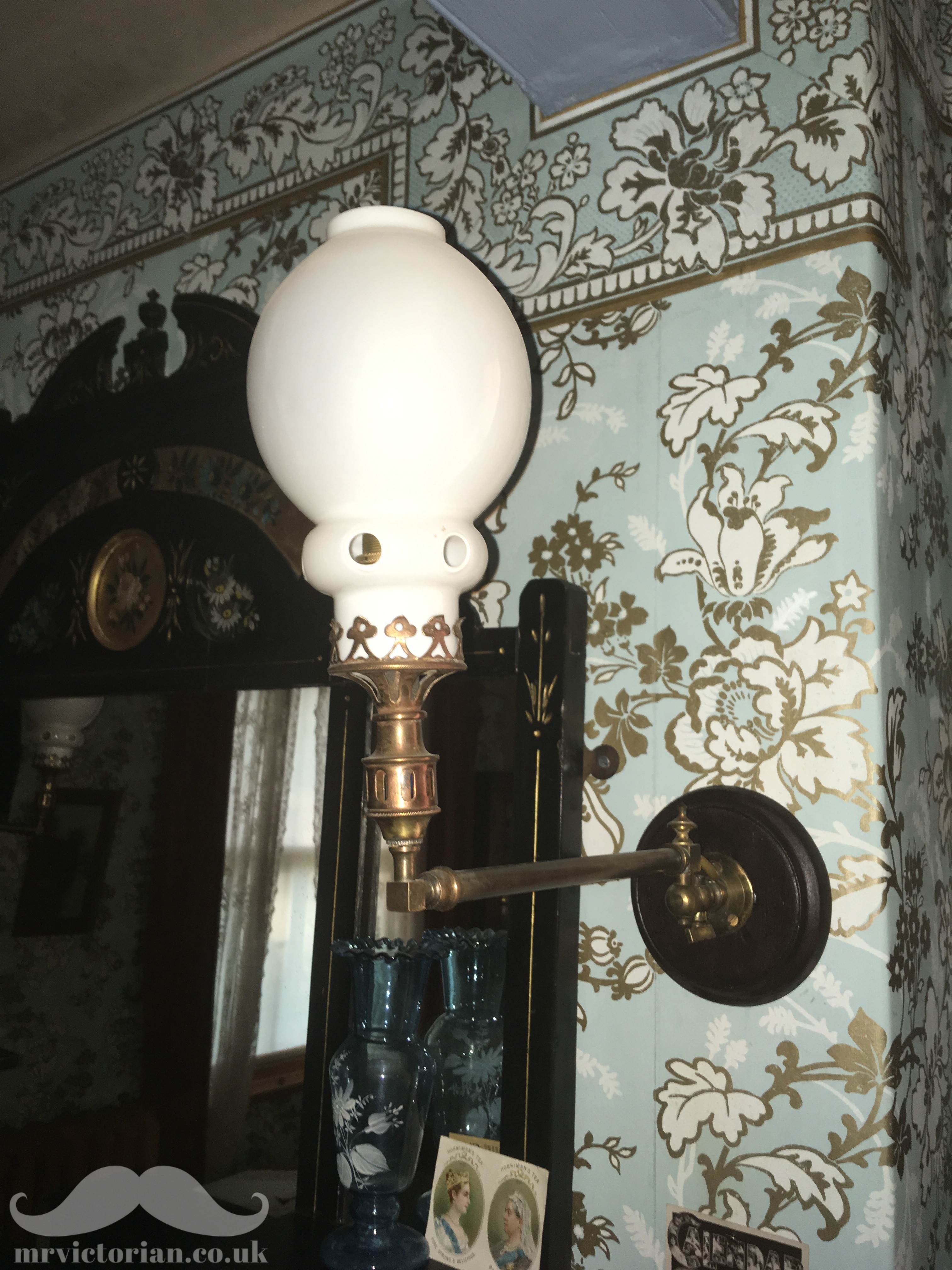
Updating fittings
The Victorian and Edwardians updated their homes as new technologies became available like we do now. But they often converted their old upright fittings to reduce costs.
For example, I have installed a downlight converter on an upright fitting in my main bedroom.
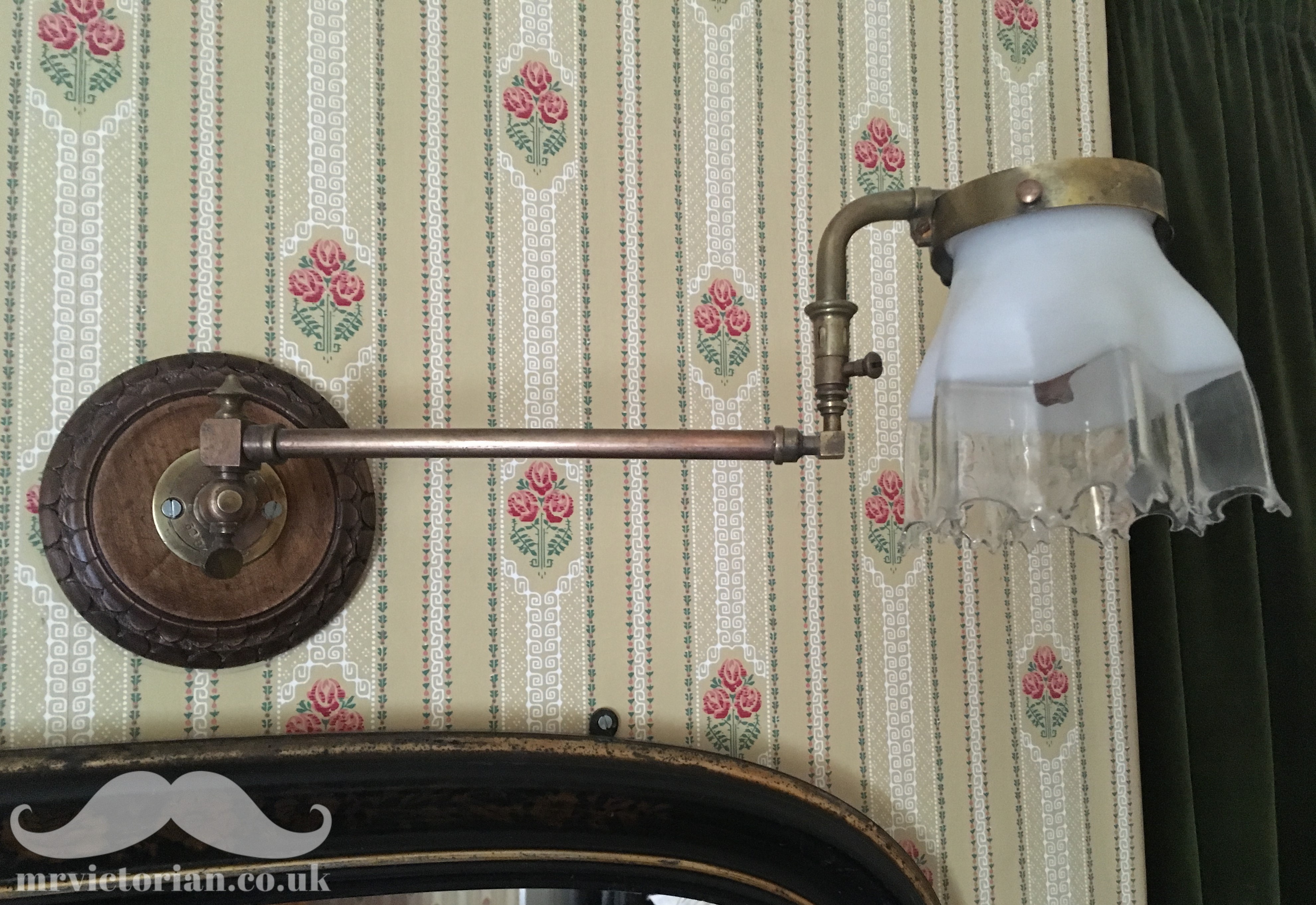
Keep it low
Above all, the Victorians positioned gas lights much lower than modern lights as they were less powerful.
For instance, a Victorian book on house building recommends mantle lights were installed at five foot from the floor, and hall and bathroom fittings set at six foot.
Low fittings above your fireplace are less of a safety risk, but low central fittings could be dangerous unless you have a table beneath.
Leave them be!
Don’t be afraid to use unconverted gas lights for decoration and supplement them with discreet modern fittings as I have in my bedrooms.
Unfortunately, these rooms originally only had one gas light, so not very practical for modern life!
Antique lighting – summing up
Above all, there are many unconverted gas lights or unsafe old electric fittings available on online auction sites which can be rewired but make sure you get a professional to convert them!
However, I found that gas fittings are not easy to convert as connecting parts need to be drilled out. I used exposed gold wiring for fittings with awkward angles as shown here.
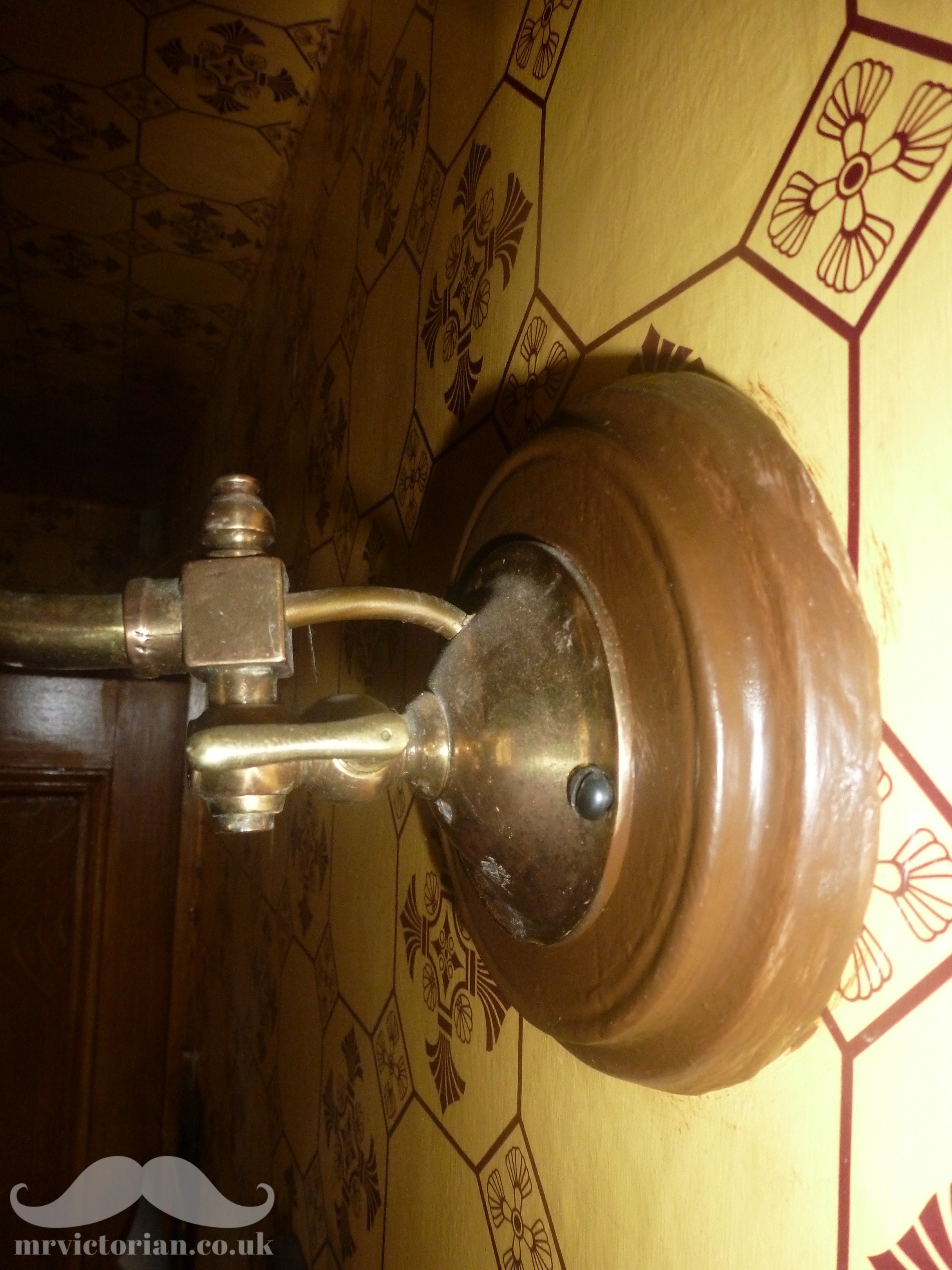
An easier but more expensive alternative is to buy ready-converted fittings from a reputable antique light dealer such as Jones Antique Lighting.
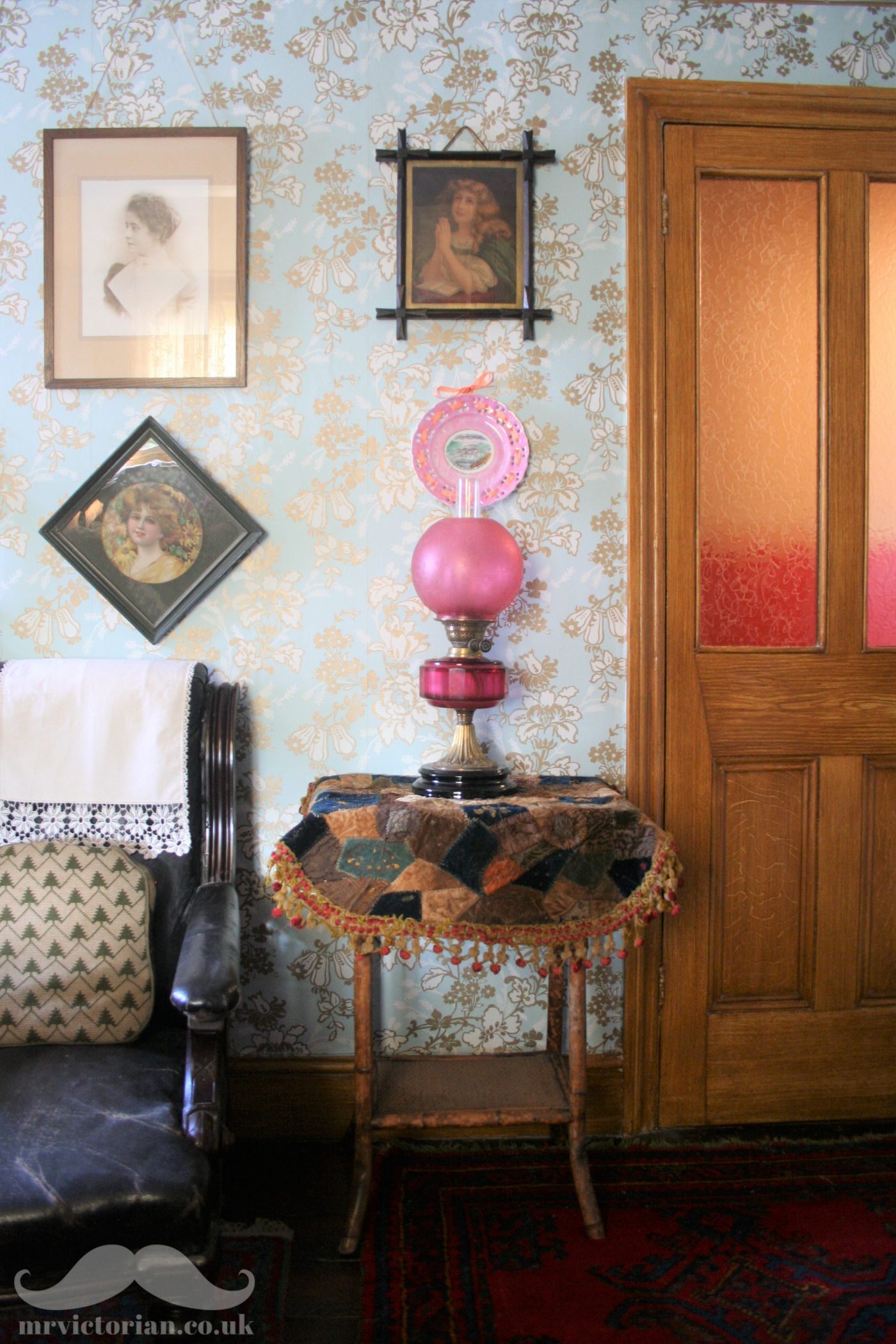
Dear Mr Victorian
Do you run the lights on gas because I have spotted modern lightbulbs a few times
Yes, we either have discreet modern light fittings or converted gas lights.
hi is it possible to reuse old gas lamps? i have recently discovered 2 wall sconces and am hoping to get them working again in my victorian parlour.
Maybe in the future if I can be able to buy a ceiling gas pilot light with chains, could i still connect it to gas and use it again?
I know of people doing this but I would seek advice from someone who has done it. The guy that runs this site may be able to advise further https://williamsugghistory.co.uk/contacts/
This is a good link which may be able help you on this for advice etc. – https://williamsugghistory.co.uk/contacts/
Hi MR Victorian
Do you know of any companies who can make reproductions of these original gas lamps as I want to reinstate gas lamps in my parlour, dining room and the kitchen
I’m afraid I don’t. I would contact the Black Country Museum which still has them running – they may know of a supplier.
Hi Mr Victorian.
This may be an unusual question for you. I’ve tried all sources to find out how the victorians installed a cast iron, 7′ gaslamp post. I recently acquired one, I’m refurbishing it and hopefully would like it in the front garden. The trouble is, it weighs about 250-300kg. Too many bodies would be in each others way and a crane hire want £200+. Have you any ideas how I can put it in the ground…. Safely?
Regards
Stan.
Greetings from Delaware , over in the states. I’m loving your blog. I recently found it during the on going bit by bit restore of my beloved 1923 ” dollhouse ” ( as my 4 year old daughter calls it) . It reminds me of a little 1920s bungalow. Even though it’s technically a ” twin” or ” duplex” to most. It was a 6+ month vacant rental that was not properly taken care of in the past. I saw many original touches in tact and set my heart on restoring back to the roaring 20s. I was wondering if you could help me understand what was left the brass light fixture that was in the 1 and main connector hallway of my home. My father helped me get this crumbling place habitable again. We took it down but carefully saved it until I can understand what it’s missing or it may have originally looked like. It connects to the ceiling the same way your example pictures do. Then there 2 thin brass tube like bars that make an oval shape. They meet in the center of the bottom of the oval. Which is where the light bulb goes. I think there was maybe some kind of glass bowl in the brass oval? Possibly that housed the light bulb? I’ve spent hours researching similar original brass period pictures . I’ve got nothing so far. Thank you for your time!
Such an interesting post. Proved very helpful for me to research on light fixtures for a drawing room play I’m working on to direct.
So just to make sure I got this right: for upper class households, say for a duke, in 1913, they would have has gas light lamps and downlit particularly, correct?
Thanks and keep it up 🙂
I would say if upper class and in a country house it would either be electricity by 1913 or still oil lamps. Electricity is more likely for an urban upper class house at this point. Gas lamps were frowned upon by the upper classes and may have only lingered in urban upper class housing around this period.
thanks for info